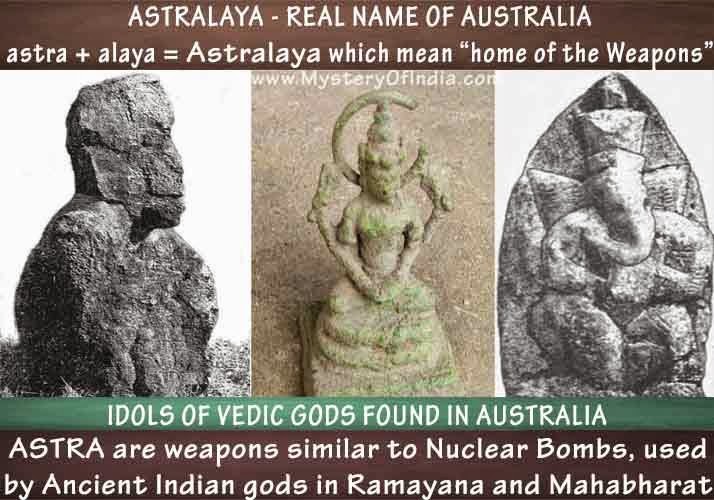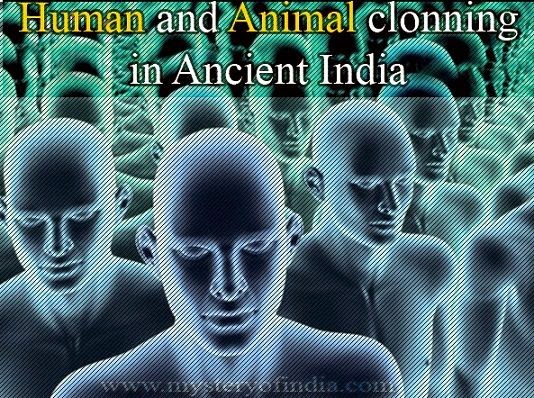P N Oaks, in his book World Vedic Culture, points out that the aborigines of Austrailia have their origin in what are popularly known as the Dravidian races of South India. The recent study of Dr Raghavendra Rao from the Anthropological Survey of India, says that
DNA evidence linking Indian tribes to Australian Aboriginal people
points to the fact that humans arrived in Australia via a southern
coastal route through India. His team used computer programs to predict
that a common ancestor existed, between the Indian population and
Aboriginal Australians, up to 50,000 years ago.
Wednesday, September 24, 2014
Sunday, September 21, 2014
Makara - A Dinosaur in Bhagwad Purana

Thursday, September 18, 2014
Mystery of Red Rain in India
 The Kerala red rain phenomenon was a blood rain (red rain) event that occurred from 25 July to 23 September 2001, when heavy downpours of red-coloured rain fell sporadically on the southern Indian state of Kerala, staining clothes pink. Yellow, green, and black rain was also reported. Coloured rain was also reported in Kerala in 1896 and several times since,most recently in June 2012.
The Kerala red rain phenomenon was a blood rain (red rain) event that occurred from 25 July to 23 September 2001, when heavy downpours of red-coloured rain fell sporadically on the southern Indian state of Kerala, staining clothes pink. Yellow, green, and black rain was also reported. Coloured rain was also reported in Kerala in 1896 and several times since,most recently in June 2012.Monday, September 15, 2014
30,000 years old Rock Shelters of Bhimbetka
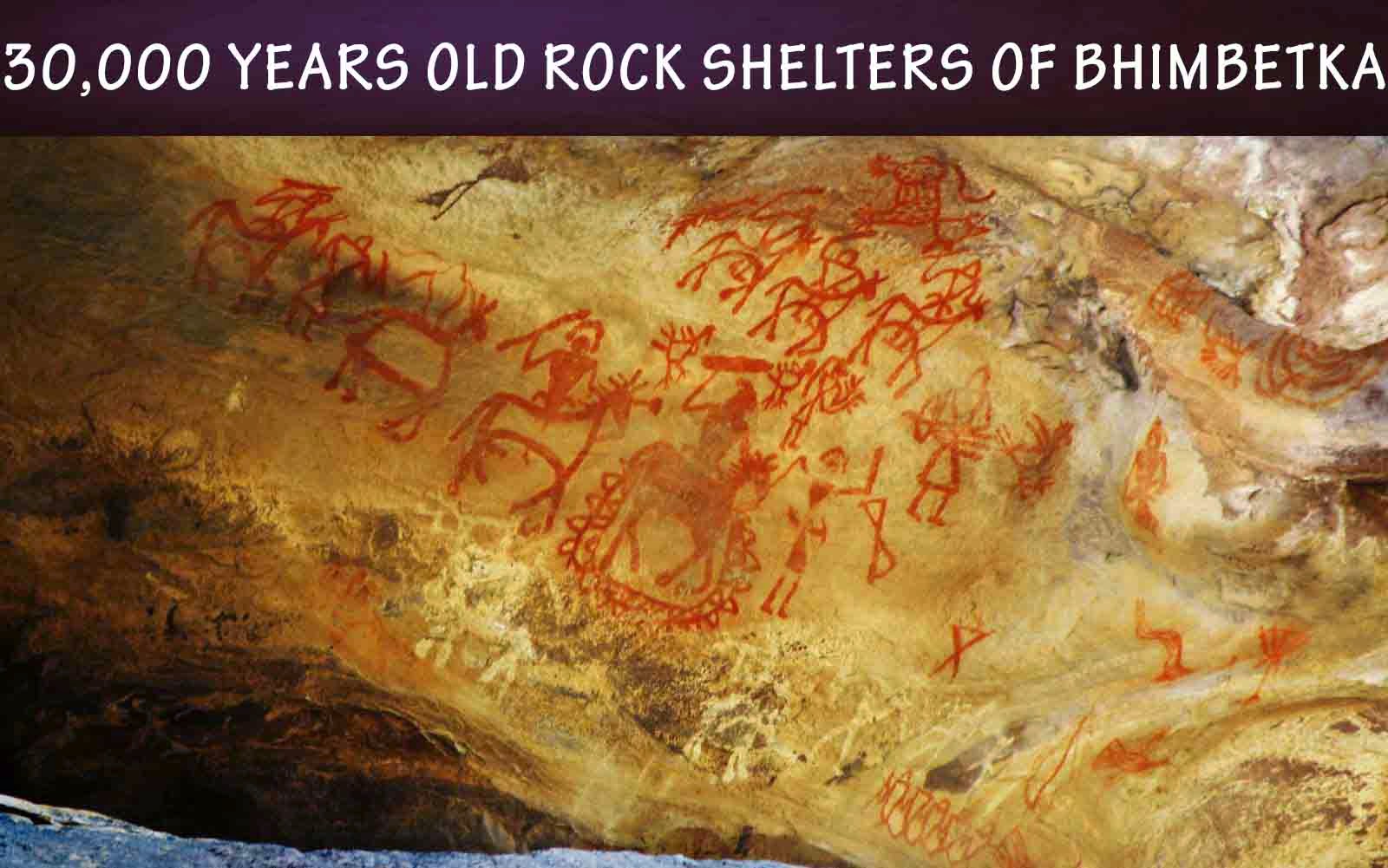
The Bhimbetka rock shelters are the collection of 750 rock shelters from which 500 are inwrought by the paintings. Situated in the Raisen District of Madhya Pradesh of India, these Stone Age rock paintings are around 30,000 years old. It is one of the largest repositories of prehistoric art in India. The shelters were designated a UNESCO World Heritage site in 2003. In addition to the cave paintings, archaeologists have unearthed large numbers of artifacts in the caves and in the dense teak forests and cultivated fields around Bhimbetka, the oldest of which are Acheulean stone tool assemblages.
Sunday, September 14, 2014
The Mysterious Ajanta Caves
.jpg)
Two thousand two hundred years ago work began on an extensive series of cave monuments in Maharashtra, India. Over a period of hundreds of years, thirty one monuments were hewn piece by piece from the rock face. Then, some speculate around the year 1000AD, they fell in to disuse. Dense jungle grew around, hiding the caves away from human eyes.
Wednesday, September 10, 2014
Mount Kailash - A man-made pyramid?
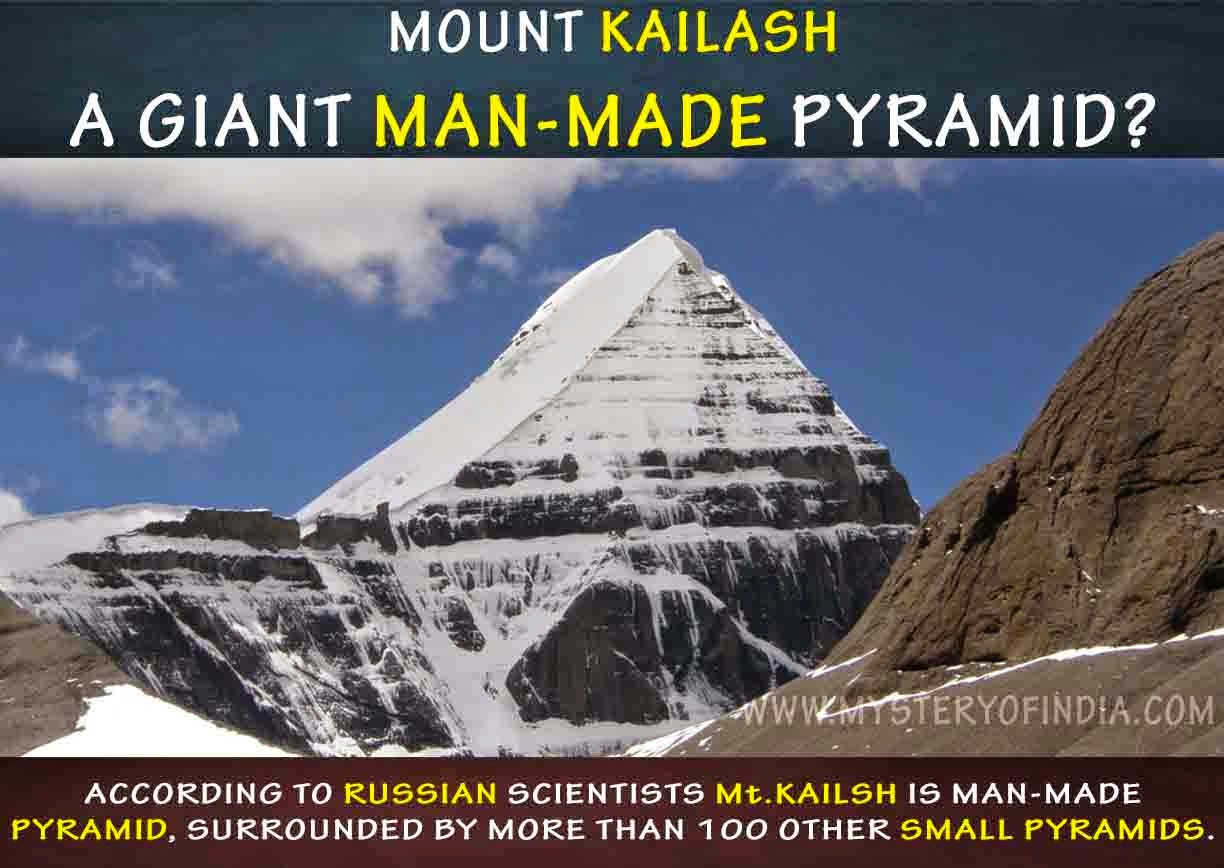
Kailash is a sacred Tibetan mountain shrouded in mystery and legends. With an impressive height of 6718 meters, Mount Kailash represents the axis of the world or the stairway to heaven for the people in the region. Both Buddhists and Hindus, as well as older religions, recognize Mount Kailash as an ancient holy place. Approach Kailash not only prohibited, but dangerous. In the immediate vicinity of mountains time flows much faster, and people have gone to the mountain, often not returned.
Tuesday, September 9, 2014
Takshashila - Worlds oldest University
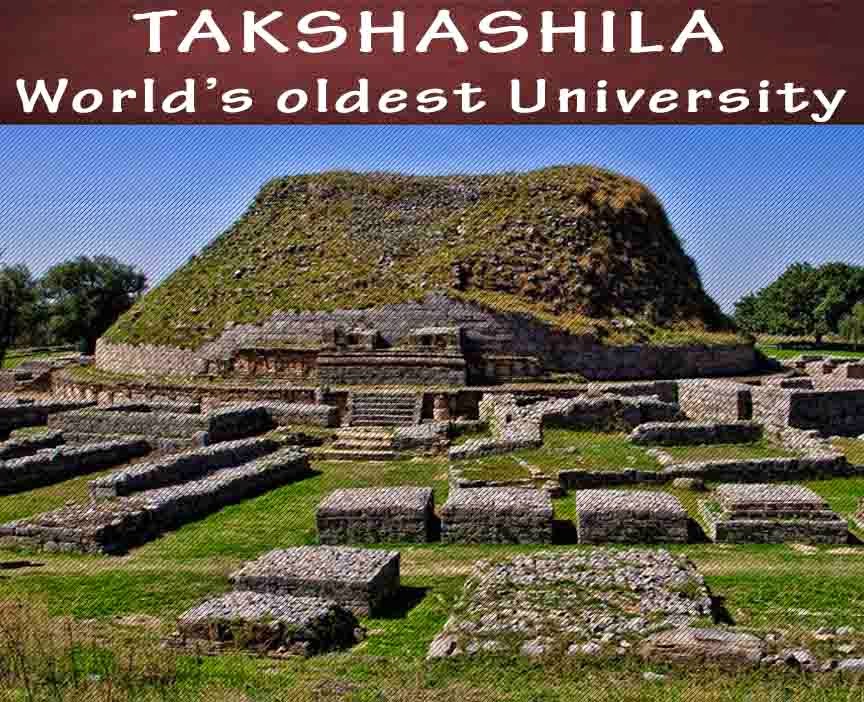
India has a long and venerable history in the field of higher education. In ancient times, the country was known to have been home to the oldest formal universities in the world.
More than 2700 years back a huge university existed in that ancient India where over 10,500 students from all across the world came for higher studies.This was the Takshashila university of ancient India (wrongly spelled as Taxila today). It was an important Vedic/Hindu and Buddhist center of learning but wasn't as well organized as the University of Nalanda.
Wednesday, September 3, 2014
Ancient Nalanda University resumes after 800 year
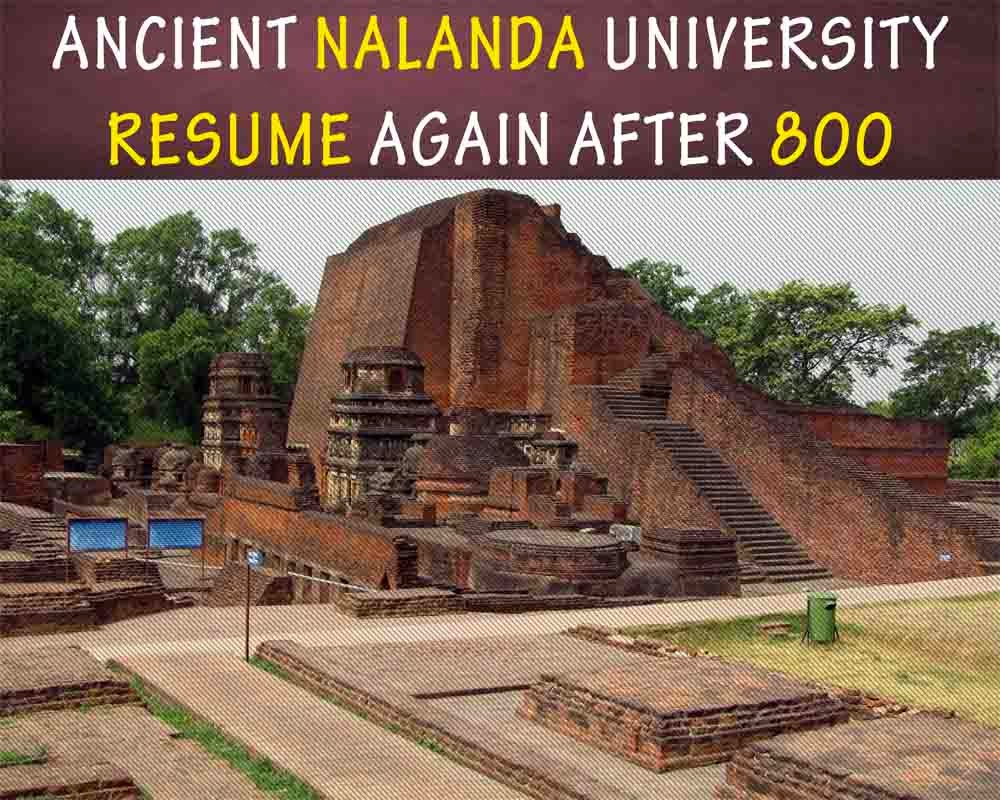
Nalanda University was an ancient centre of learning in India. Established in the 5th century AD by Gupta Kings, Nalanda University was among the first great universities in recorded history, predating such institutions of higher learning like Al-Azhar in Egypt (10th century AD), the University of Bologna in Italy (11th century AD), and Oxford University in England (12th century AD). It was destroyed by the invading Turkish army of Bakhtiyar Khilji, a general of Qutbuddin Aibak. But now, for the first time in 800 years, the spirit of Nalanda University revives again as classes began from 1st Sep 2014 at its newly established campus in Rajgir, just 12 km away from the original site.
Monday, September 1, 2014
Vijay Stambh - Tower of Victory in Rajasthan
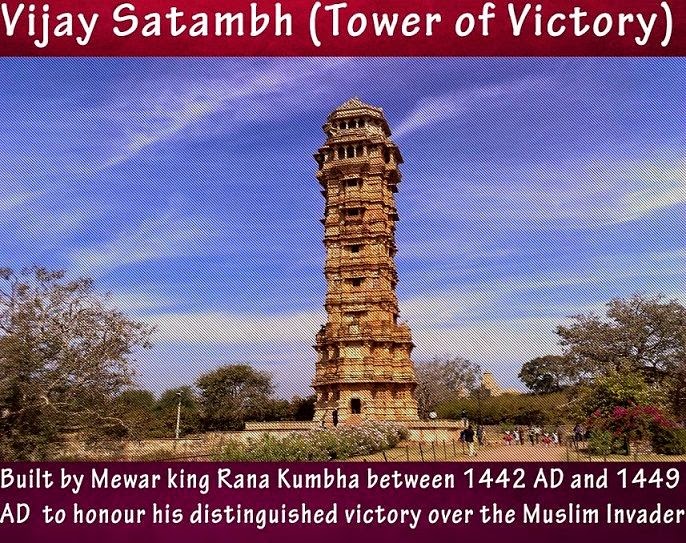
Vijay Stambha or Tower of Victory is one of the most famous monuments of India and is an important tourist attraction of Rajasthan. Located in Chittorgarh fort in Rajasthan, India, Tower of Victory was constructed by Mewar king Rana Kumbha between 1442 AD and 1449 AD to honour his distinguished victory over the joint attacks of Sultan Mohammad Khilji of Malva and Sultan Kutubuddin Shah of Gujarat.
Sunday, August 31, 2014
Mystery of 1600 years old Iron Pillar of Delhi

The skill and the technology possessed by ancient Indians may not be agreed by present day 'secular' historians, but the truth cannot be suppressed for long. The Iron Pillar standing tall at Mehrauli, Delhi is stands proof of how advanced science was in ancient India.
Friday, August 29, 2014
Kutub Minar or Dhruv Stambh?

About the Kutub Minar itself there is overwhelming proof that it was a Hindu tower existing hundreds of years before Kutubuddin and therefore it is wrong to ascribe the tower to Kutubuddin.
Thursday, August 28, 2014
Truth of Nehru Gandhi Family - India is still ruled by Moghul?


Jawaharlal Nehru was the first prime minister of modern India, and he ruled the country from 1947 to 1964. He was born on 14th November 1889, to Motilal and Swarup Rani Nehru. The family belonged to a Kashmiri Brahman tribe called ‘Pandit.’ But truth is that Jawaharlala Nehru belong to a Muslim family and he is descendant of Mughal.
Wednesday, August 27, 2014
Similarities between the Hindu and Greek mythologies
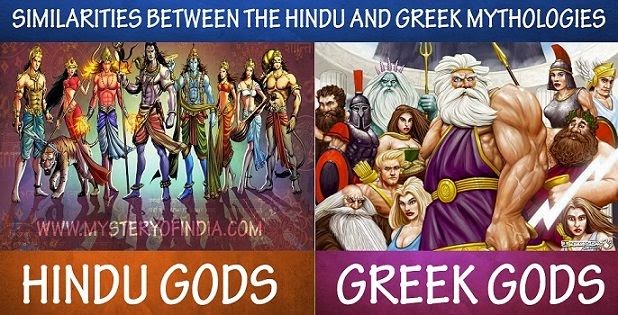
The amazing similarities between the Hindu and Greek mythologies frequently crops up in comparative mythology - or the comparison of myths from different cultures in an attempt to identify shared themes and characteristics.
Sunday, August 24, 2014
Ancient India's contribution to Mathematics
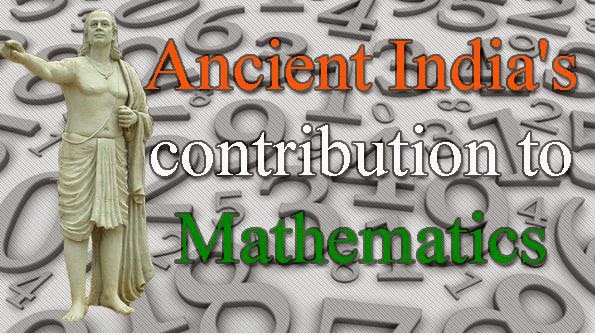
Mathematics represents a very high level of abstraction attained by human brain. In ancient India, roots to mathematics can be traced to Vedic literature, which are around 4000 years old. Between 1000 BC and 1000 AD, a number of mathematical treatises were authored in India.
Saturday, August 23, 2014
Medical Science in Ancient India

Thursday, August 21, 2014
Myth of Ancient Nuclear War in India

Monday, August 18, 2014
Test Tube Babies in Ancient India

Medical science is presented in the books of Ayurveda as a separate Shastra. However the original medical science present in the Vedas, the Mahabharata and the Puranas is far more superior to the Ayurveda. All the Shastras (sacred scripture) of India have their origin in the Vedas. The Vedas are composed in the Vedic era extending from 23960 years B.C to 5560 BC. The Mahabharata is composed during 5560 BC and the Puranas still later.
Saturday, August 16, 2014
Human and Animal cloning in Ancient India
Cloning is the scientific process of creating an exact replica of any living being. Such a clone has the same face, same body structure and same genetic code. This means DNA of clone is same as the DNA of the living being that was used to create a clone. Clone can be created from a single cell and thus, thousands and millions of replica can be created from a single living being by transfusing his/her living cell in an embryo of another living species.
Tuesday, August 12, 2014
Rani ki Vav - Beautiful stepwell of India
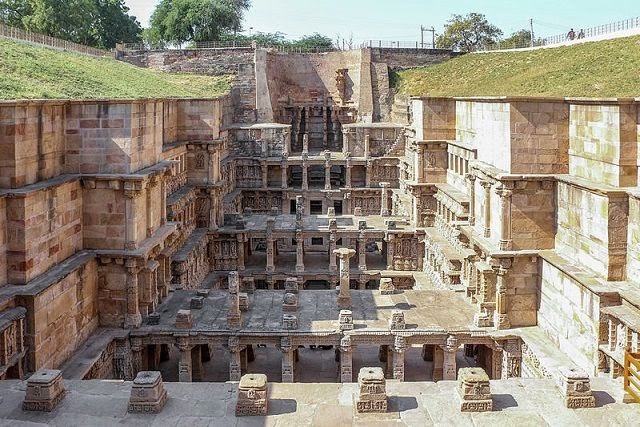
Rani Ki Vav is the oldest and the grandest stepwell in the state of Gujarat, India. It is situated at Patan and is believed to have been built during 1022 to 1063 AD. Rani (Queen) Udayamati commissioned this vav or stepwell, in the memory of her husband King Bhimdev I of the Solanki dynasty. In Hindi, "Rani" means "Queen," and "Vav" means "Well."
Was an Indian, The First Man to Fly?
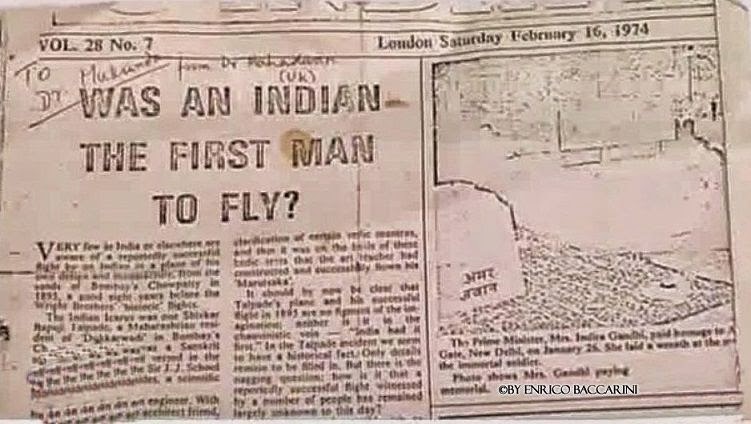 |
| News From London Times, Februart 16th, 1974 - Image Source |
The Wright brothers, Orville and Wilbur, are acknowledged to have invented and built the world’s first successful airplane and made the first controlled, powered and sustained flight in 1903. However, in 1895, an Indian, Shivkar Talpade, a drawing teacher from JJ School of Art in Mumbai, is said to have flown an aircraft, Marutsakha, on Girgaon Chowpatty.
Sunday, August 10, 2014
How British Distorted Indian History
.jpg)
The history writing by the British was a deliberate and systematic effort. The British used history of India as a tool for demoralizing the natives. History of India was twisted, falsified and misinterpreted on a grand scale. In a letter dated December 16, 1868 the famous Indologist Max Muller wrote to the Duke of Argyll, the then Secretary of State of India, 'India has been conquered once, but India must be conquered again and that second conquest should be a conquest by education'. (Ref: 'The Life and Letter of F. Max Muller, edited by Mrs. Max Muller, 1902, Vol.1, p.357). Prof. Max Muller was not just a philosopher, he was also an examiner for the Indian Civil Service (ICS) examination. Teaching of falsified history played a great part in this 'second conquest'.
Thursday, August 7, 2014
The Trident of Peru in Ramayana

Dr. P. V. Vartak from Pune has written a researched version of Ramayana which is titled Vastav Ramayan (Real Ramayana). According to this version, South America was known during the Ramayan era. Indians migrated to South America which is called "Patal Lok" in sanskrit.
Wednesday, August 6, 2014
Misconception of Indian Caste System

Tuesday, August 5, 2014
7000 year old Ancient caves discovered in Andhra Pradesh
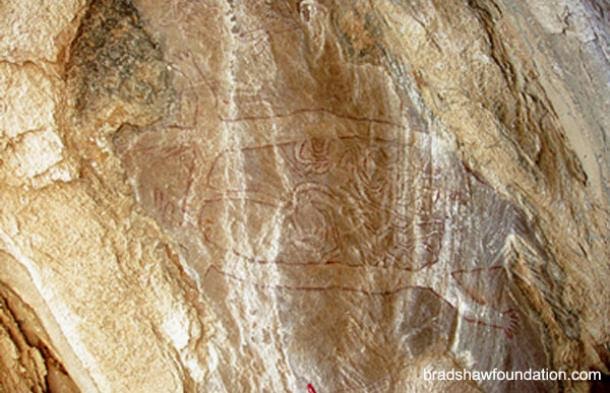
A group of caves containing ancient rock art have been discovered by a researcher in Akkampalli, in the state of Andhra Pradesh, India. The discovery is archaeologically significant as the caves contain artwork that depicts the state of civilisation and culture 7,000 years ago.
Legends of Hemkund Sahib Ji
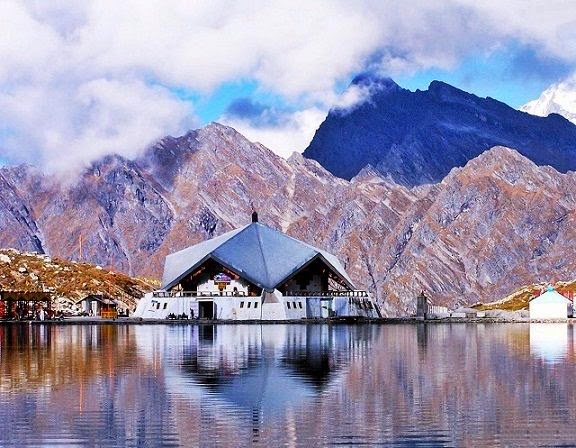
The spiritual richness of India is adored worldwide. Being a home of various religions, India has different pilgrimage destinations. The best part is that there are numerous regions wherein sacred destinations of different religions come together. One such unique amalgamation can be seen in the Chamoli district of Uttarakhand where one can visit Shri Hemkund Sahib Ji, the most sacred destination of Sikhs and Badrinath temple, the sacred shrines of Hindu religion.
Sunday, August 3, 2014
2500 year old ancient city found at Chhattisgarh
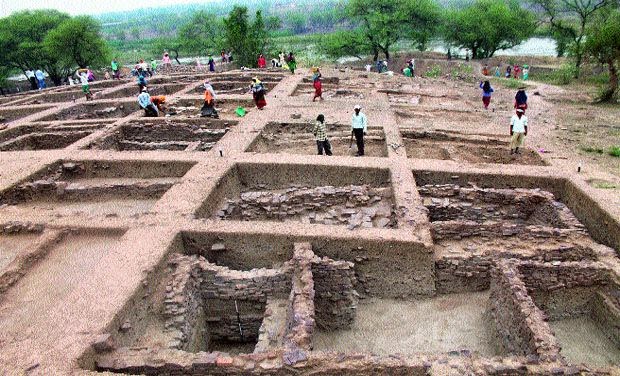
In May last year, archaeologists in India unearthed evidence of a 2,500-year-old planned city in Tarighat, Chhattisgarh, complete with water reservoirs, roads, seals and coins, buried 20ft below the ground, in a discovery billed as India’s biggest archaeological find in recent memory. Now at the same site, researchers have found remnants of a “gutted settlement” which had been completely devastated by a huge fire in around the 2nd century BC, according to a new report in the Deccan Chronicle. The discovery adds to the mystery of the ancient site, as archaeologists try to piece together its ancient past.
Saturday, August 2, 2014
Mystery of 9 Unknown men of Mauriya Empire
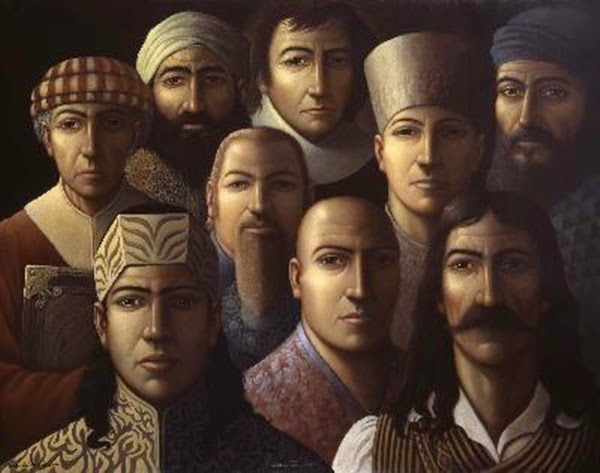
The Nine Unknown Men of ashoka a secret society of India dating back to two millennium is the greatest Mystery in India which is believed to be the indian version of Atlantis dating back to 273 BC to the regime of the Ashoka indian emperor the grandson of Chandragupta who was the first person attempted to unify India...
Excavation in Oman finds link to Indus Valley civilisation

Archaeologists in Oman's southern Sinaw region have discovered a site that could reveal Indus Valley civilisation's influence on the Omani society 2,300 years ago, officials said. The tomb of a buried man with sword and daggers made of iron and steel was unearthed during an excavation and it has been scientifically proved that iron and steel arms were made in the Indus Valley civilisation first time ever.
Friday, August 1, 2014
Vatican city was Hindu temple
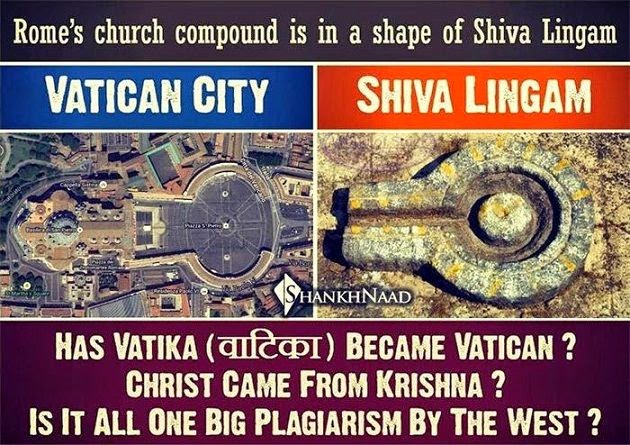
All religions are one and are derived from Vedic Sanatana Dharma. Famous historian P.N. Oak claimed that the word Vatican originally came from the sanskrit word "Vatika", that "Christianity" came from the sanskrit words "Krishna-neeti", ("ethics of Krishna" or "the way of Krishna"), and that "Abraham" came from the sanskrit word "Brahma". He further claims that both Christianity and Islam originated as distortions of Vedic beliefs.

Thursday, July 31, 2014
Aryan Invasion Theory Proven False
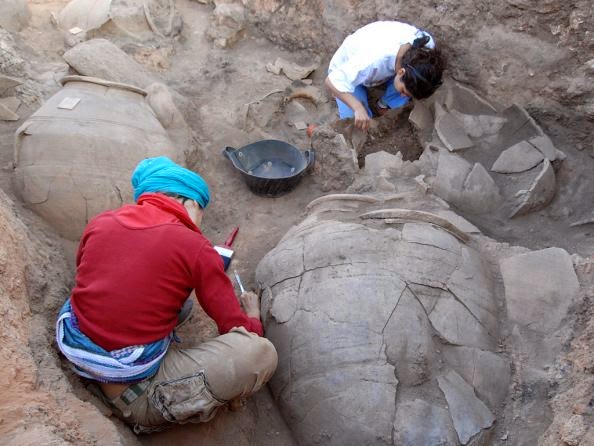
Wednesday, July 30, 2014
History of Sultanpur Lodhi

Monday, July 28, 2014
Mystery of Bird Suicide at Jatinga, India
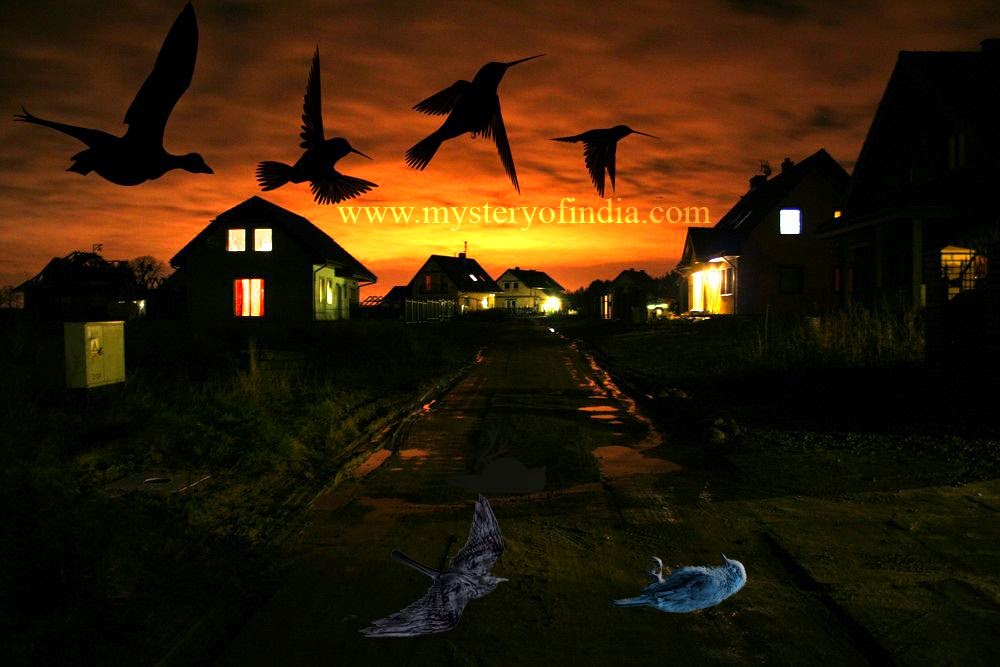
Jatinga is a village on a ridge, is located in Dima Hasao District, Assam State in India. It is 330 km south of Guwahati. The village is inhabited by about 2,500 Khasi-pnar tribal people and few Dimasa people.
This small Village is famous for the phenomenon of birds “committing suicide”. Over the last 100 years, thousands of birds have flown to their death over a small strip of land in Jatinga, India.
Saturday, July 26, 2014
Electricity In Ancient India
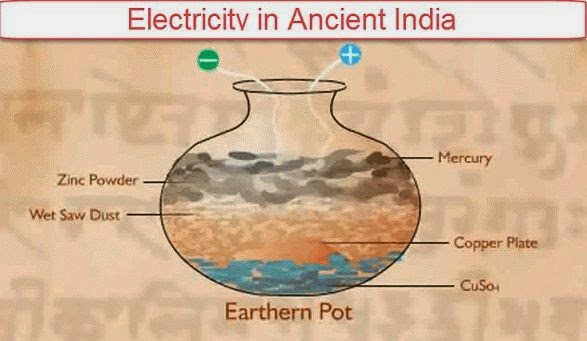
In the Prince's Library of Ujjain in India, there is a well preserved document called the 'Agastya Samshita', which dates back to the first millennium BC. It contains a detailed description not only of how to construct an electric battery/cell, but also, how to utilize the battery to 'split' water into its constituent gasses.
Thursday, July 24, 2014
Origin of Adam and Eve's Story in Ancient India

Wednesday, July 23, 2014
Elephanta Caves - ancient rock-cut chambers

The Elephanta Caves are a complex of ancient cave temples on Elephanta Island, located 10 km away from the Gateway of India at Mumbai. One of the oldest rock cut structures in the country, the Elephanta Caves are the perfect expressions of archaic Indian art associated to the cult of Lord Shiva. Here, Indian art has found one of its most perfect expressions, particularly the huge high reliefs in the main cave. Here you will find two categories of caves; one is the Hindu rock art and the other is the Buddhist rock art. The place is still worshipped by the locals, and is dedicated to Lord Shiva. One can spot some resemblance to the Ajanta and Ellora caves, which are around 300 km from Elephanta.
The Skeleton Lake of India

Scientists now believe they have finally solved the mystery of how and why the skeletons of over 200 people were found in a frozen lake in northern India.
Saturday, July 19, 2014
Bharata: The Great Emperor of India

Thursday, July 17, 2014
The Amazing Rock cut Kailash Temple of India

When most of us were growing up, we learned about a handful of man-made wonders of the world such as the pyramids in Egypt, the Colosseum in Rome, and the Great Wall of China. One that may have slipped right past you could have been the Kailashnath Temple in Maharashtra, India.
10,000-year-old cave paintings depicting aliens found in India
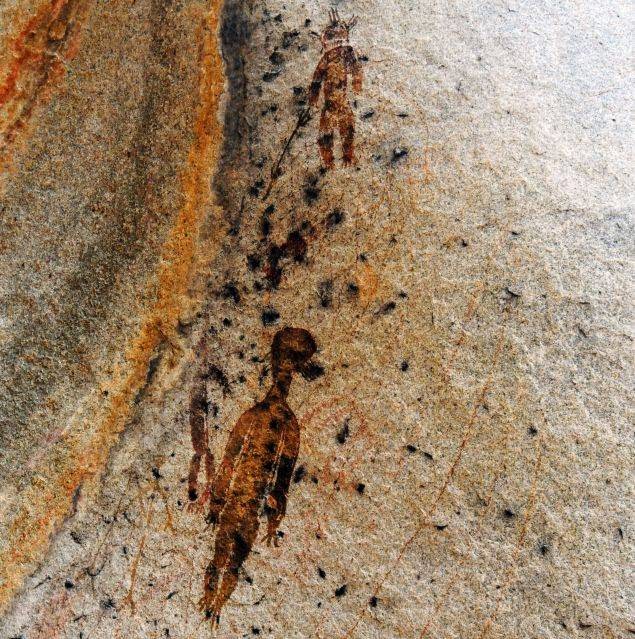
Kumari Kandam- The Lost Continent

Wednesday, July 16, 2014
Kumbhakarna was a mechanical Robot?

The first Robot used in the wars was Kumbhakarna described by Valmiki in Ramayana, the world's oldest epic poem. In Ramayana, Kumbhakarna is referred as Ravana’s younger brother.
But he was not a living being at all, but a Yantra (machine/robot) similar to a tank but in human form. Ravana used Kumbhakarna sparingly, meaning, only during very difficult battle-situations, and it instantly turned the tide in Ravana’s favour.
Monday, July 14, 2014
Real face of Gandhi Part 1

Gandhi is idolized worldwide as a prophet, a visionary, even a messiah. Earl Mountatten, the last Viceroy of India, said, "Mahatma Gandhi will go down in history on a par with Buddha and Jesus Christ." The accuracy of his statement can be seen in modern Hindu temples, such as the "Gandhi Temple" of Bhatra village, Sambalpur District, where Gandhi is worshiped as a deity.
Real face of Gandhi Part 2

In 1906, Gandhi cheered on the British as they waged a war on the black Zulus. He then volunteered for military service himself, attaining the rank of Sgt. Major in the British Army and assisting the war on blacks in every way he could.
Anti-black quotes of Gandhi
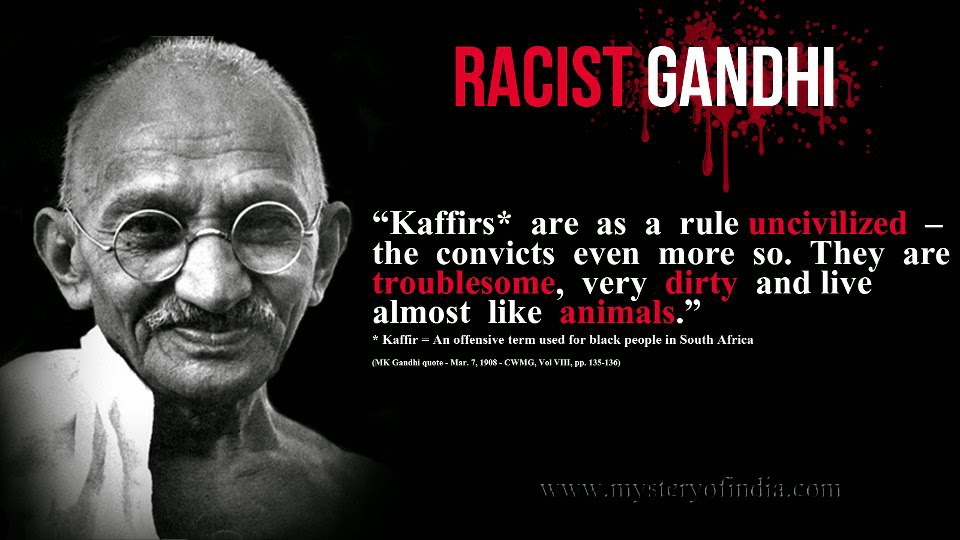
In 1904, Gandhi founded The Indian Opinion, a newspaper which he used as a political tool to promote his personal views. It is in this paper, which Gandhi edited until 1914, that we find a record of his extensive anti-black activism and opinions. A list of anti-black quotes from his writings, in which he invariably refers to the South African natives as “Kaffirs. Gandhi's opinion of the native is best summarized when he calls them people “whose occupation is hunting, and whose sole ambition is to collect a certain number of cattle to buy a wife with and, then, pass his life in indolence and nakedness.”
Thursday, July 10, 2014
Connection between Ancient India and Uru Civ of Australia

Tuesday, July 8, 2014
Chakravan city in Ramayana
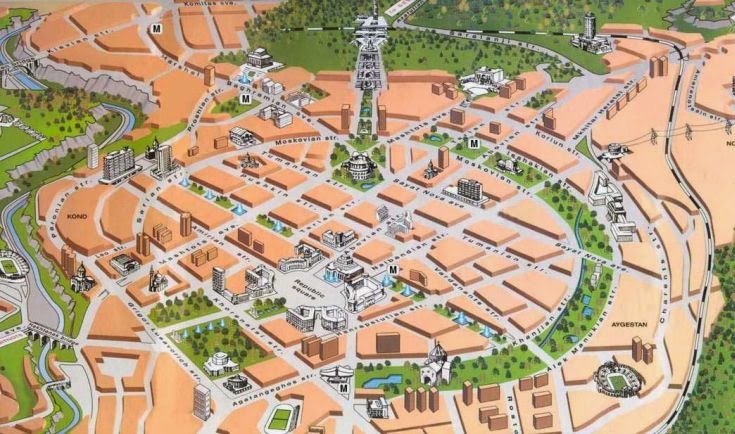
In Ramayana, the most ancient poem written in human history, sage Valmiki describes about a circular city which is towards west of bharata khanda (India).
To the brigade that was supposed to travel west, he gives a route map which will lead them to Astagiri (Asta = sunset, giri = mountain). He asks them not to travel beyond Astagiri, as that is culmination point in west direction. Sugreeva directs the ‘vanaras‘ to travel towards west from the Vindhya mountains of India, right up to the fourth quarter of the (Arabian) sea, via a point ‘where the Sindhu(Indus) river falls into the sea‘. The Indus joins the Arabian Sea at Karachi in today’s Pakistan.
Going along this route, the fourth quarter of the sea would bring the Vanaras to the ‘Persian Gulf‘. Here, Valmiki describes a coastal mountain by the name ‘Hemgiri‘, whose peak is so high that it seems like touching the sky.
They will also encounter a waterlogged mountain named ‘Paariyatra‘, which means that they travelled sea-side along the persian gulf. Then he describes Mount ‘Vajra‘, which shines like a diamond – might possibly be a reference to the peaks of what is today known as the Zagros Range.
 |
| Persian Gulf |
This city or structure was built on this mountain by the celestial architect ‘Viswakarma‘.
This is where ‘Sudarsana Chakra‘, the weapon of Lord Vishnu was created by Viswakarma.
This could be the city of Yerevan in Armenia, which is one of the oldest continually inhabited cities of the world.
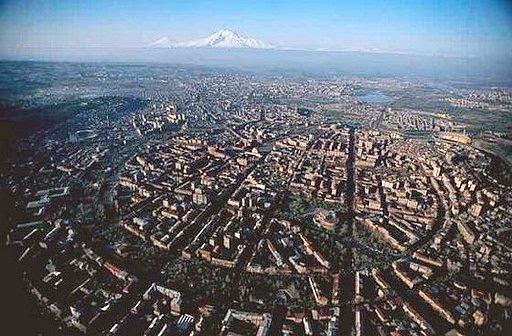 |
| Ancient yerevan City |
Yerevan has been rebuilt multiple times on the older ruins over many
years but still its original ‘circular’ shape has been retained.
Yerevan city is spread out now but historically the city was located at
the heart of the Armenian Highland in Kotayk canton of Ayrarat province.
Ramayana says that at a distance of 64 ‘yojanas‘ (between 6 to 15 km) from this city, Vanaras will encounter a peak named ‘Varaaha‘. This may be Mount Ararat of today, which is visible from Yerevan.
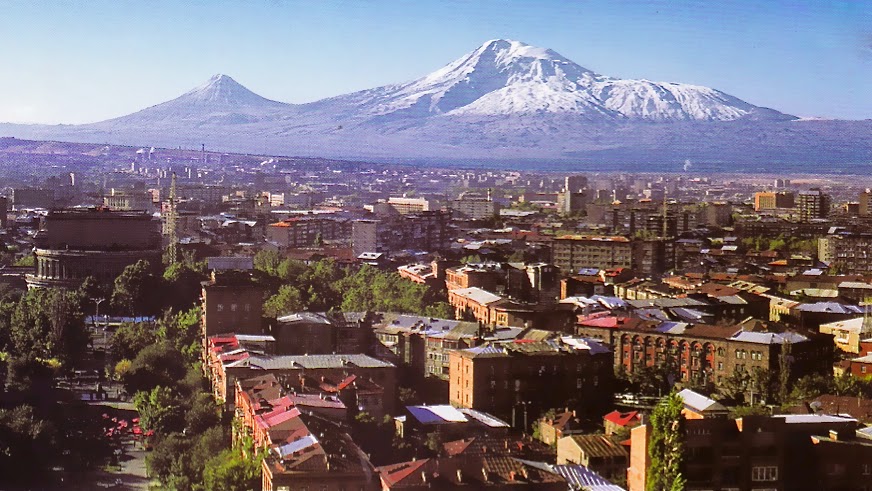 |
| Yerevan and Mount Ararat |
The Chakravaan city could also be ancient Baghdad, which was also built multiple times on a circular layout.
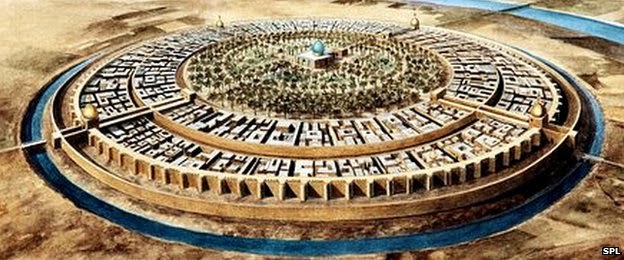 |
| circular ancient baghdad city |
Few researchers assume the circular structure to be ‘Arkaim Circles’ in the ural mountains.
But they’re towards north-west of india and have no arabian sea near them.
King Sugreeva instructs one group to go towards the east direction and asked them to look for a Trident etched on a mountain. This Trident of Peru is still visible from sky.
King Sugreeva instructs one group to go towards the east direction and asked them to look for a Trident etched on a mountain. This Trident of Peru is still visible from sky.
Via BookFacts.com
Subscribe to:
Posts (Atom)

Custom Search
Subscribe to Newsletter
Sign up now to receive breaking news and to hear what's new with our website!

